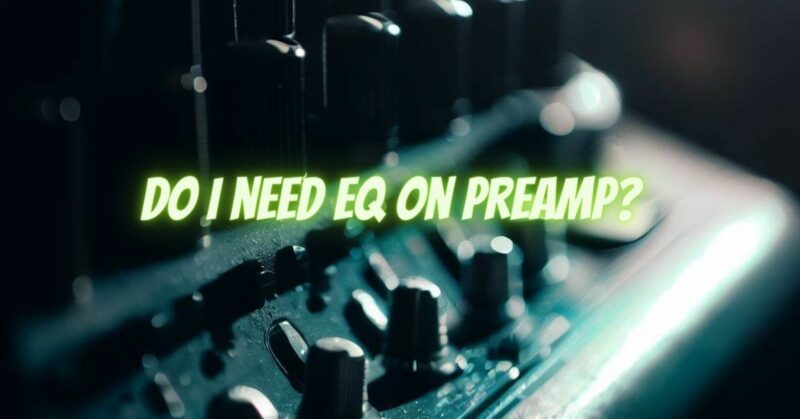When setting up a sound system or recording equipment, one common question that often arises is whether you need EQ (Equalization) on a preamp. To answer this question effectively, it’s crucial to understand what a preamp is, what EQ does, and the scenarios in which EQ on a preamp can be beneficial.
What is a Preamp?
A preamp, short for preamplifier, is an essential component in audio systems. It is the first stage in the signal chain, positioned between a microphone or musical instrument and the main amplifier or recording device. The primary function of a preamp is to amplify weak electrical signals from microphones or instruments to line-level signals, making them suitable for further processing or amplification.
Understanding Equalization (EQ)
Equalization, commonly referred to as EQ, is the process of adjusting the balance between different frequencies in an audio signal. An equalizer allows you to boost or cut specific frequency ranges to shape the overall tonal character of the audio. EQ can be used to enhance clarity, remove unwanted frequencies, or create artistic effects.
The Need for EQ on a Preamp
- Correcting Room Acoustics: In many recording or live sound situations, the room’s acoustics can introduce unwanted coloration or resonance to the audio. A preamp with EQ capabilities can help mitigate these issues by allowing you to adjust the signal before it’s affected by the room.
- Tailoring Microphone Response: Different microphones have different frequency responses, and not all microphones are ideal for every situation. A preamp with EQ can help compensate for a microphone’s inherent characteristics by shaping the sound to match your desired tonal qualities.
- Removing Unwanted Noise: Sometimes, microphones may pick up unwanted background noise or interference. EQ can be used to reduce or eliminate specific frequencies associated with these noises.
- Creative Sound Shaping: Musicians and sound engineers often use EQ as a creative tool to sculpt the sound. Whether it’s adding warmth to vocals, enhancing the punch of a kick drum, or making a guitar sound brighter, EQ on a preamp allows for immediate tonal adjustments.
When EQ on a Preamp May Not Be Necessary
While EQ on a preamp can be a valuable tool, it’s not always essential. Here are situations where you might not need EQ on your preamp:
- Dedicated External EQ: If you have a standalone equalizer unit in your signal chain, you can adjust the EQ at a later stage, rendering EQ on the preamp redundant.
- Minimal Signal Processing: If you’re aiming for a transparent and unaltered sound, you might prefer to record with minimal EQ adjustments and handle tonal shaping during the mixing or mastering stage.
- Consistent Sound Source: If you’re using the same microphone and instrument setup in controlled environments, you may not need EQ on the preamp as much, as you can tailor the EQ settings in advance.
The decision of whether you need EQ on a preamp depends on your specific requirements and the context in which you’re working. A preamp with EQ capabilities can be a valuable tool for correcting room acoustics, tailoring microphone responses, and shaping the sound creatively. However, it’s not always necessary, especially if you have other EQ options available in your signal chain.
Ultimately, the choice comes down to your preferences and the specific demands of your audio setup. Understanding the capabilities and limitations of EQ on a preamp empowers you to make informed decisions to achieve the desired audio results in your recording or sound reinforcement projects.


